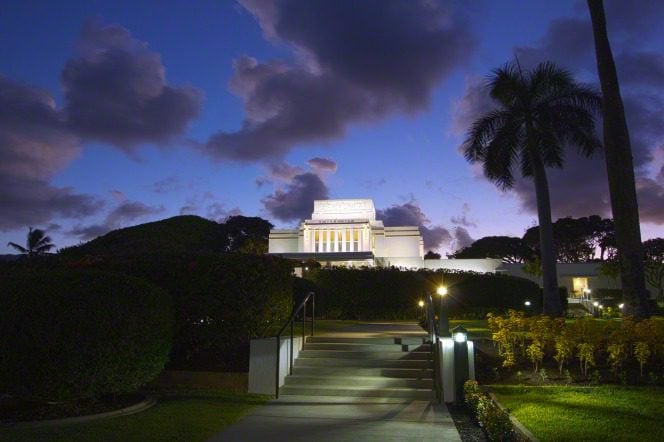
Nibley Lectures: Time Vindicates the Prophets — Easter and the Prophets
Between 7 March 1954 and 17 October 1954, Hugh Nibley delivered a series of thirty weekly lectures on KSL Radio that were also published as pamphlets. The series, called Time Vindicates the Prophets, was given in answer to those who were challenging the right of members of the Church of Jesus Christ of Latter-day Saints to call themselves Christians.
This lecture was reprinted in Immortality: Famed Discourses on Eternal Progression and Future Existence and The World and the Prophets, Collected Works of Hugh Nibley vol. 3.
The Interpreter Radio Roundtable for Come, Follow Me Old Testament Lesson 32, “Yet Will I Trust in Him” on Job 1–3; 12–14; 19; 21–24; 38–40; 42 featured the team of Steve Densley, Matthew Bowen, and Mark Johnson. This roundtable has now been extracted from the 26 June 2022 broadcast of the Interpreter Radio Show. The complete program may be heard at https://interpreterfoundation.org/interpreter-radio-show-June-26-2022/. Every single week of the year, the Interpreter Radio Show can be heard on Sunday evenings, on K-TALK, AM 1640, from 7 to 9 PM (MDT). Or — here’s a thought — you can listen live on the Internet at ktalkmedia.com.
Jonn Claybaugh has kindly contributed yet another set of his concise notes for teachers and students of the “Come, Follow Me” curriculum.
***
You may perhaps, have lost track of the calendar, so I’m writing to remind you that there are only 151 rapidly dwindling shopping days until Christmas, and that, in the United States, Labor Day — a major occasion internationally for giving newly published books as gifts and, in fact, for buying hundreds of new copies of books and giving them to members of extended families and to neighbors and ward members — falls on Monday, 5 September, this year. Even more alarmingly, Swiss National Day comes on Monday, 1 August. Moreover, at least somebody’s birthday will fall on every single day between now and the Rose Parade. Are you in desperate need of gift ideas? Well, you’ve come to the right place: Sic et Non is your one-stop “shop” for guidance on all such matters. And, oh yes, by the way: A new book will soon be available from the Interpreter Foundation:
***
In order to get my German back into some semblance of shape and also simply because I was recently in Austria and Germany (which is why I began to refresh my German), I’ve recently read several German-language books some of which I purchased while I was there. (I’ll shortly be back in German-speaking Europe yet again.) One of those books is Anton Grabner-Haider and Peter Strasser, Hitlers mythische Religion: Theologische Denklinien und NS-Ideologie (Vienna, Cologne, and Weimar: Böhlau Verlag, 2007). I actually have mixed feelings about the overall thesis of the book. But here, in my rough and ready translation, are a couple of the many passages in the book that struck me while reading it:
Today, from a distance in time of 90 to 130 years, the mode of thought that was so widespread in German culture — of “decadence” and cultural pessimism — astonishes us. It’s understandable that thinkers like Arthur Schopenhauer and Friedrich Nietzsche developed such ideas on the basis of their tragic life histories. But why so many well-situated members of the bourgeoisie (e.g., attorneys, physicians, and politicians) and not a few aristocrats adopted these modes of thought is difficult to understand. After all, for them the living conditions in the German Empire after 1871 were favorable in many ways. It was an era of economic growth, technological innovations, and political consolidation. The newly founded Empire had won two wars and looked at France and Austria-Hungary from the vantage point of a victor. In the cities, there was an unprecedented building boom, giant industrial facilities were under construction, the upper and middle social classes were secure. Since Bismarck’s “social laws,” laborers too were protected, although admittedly farmers were struggling.
Now, though, a mood of “decline” spread above all among the bourgeois class and among elements of the nobility. . .
In Austria-Hungary the pessimistic mood among portions of the population is easier to understand, because, there, the Germans had fallen into the position of a minority with respect to the Slavs and the Hungarians. This grim attitude can be found neither in defeated France after 1870 nor in Italy or England or Spain. Certainly, though, anxieties about decay also existed in the Russian empire of the Tsars. (88, 89)
It is astonishing that this pessimistic and metaphysical interpretation of the world was accepted by a broad and educated sector of the bourgeois class in a time of prosperity and of progress in both technology and the natural sciences. (76)
One thing that can be plainly learned from this phenomenon is that material wealth and technological progress are simply not enough, in and of themselves, to feed the human soul. Another relevant fact that I note is that, in many cases now, we see increased suicidality and despair and anomie among the youth of what must certainly count as one of the most prosperous and outwardly peaceful epochs of human history. Please let me be clear: I don’t draw from this the conclusion that today’s youth are mere “snowflakes” or that they’re somehow inferior. But I do think that they are being subjected to ideological and spiritual stresses that are at least somewhat unprecedented in human history.
In this context, it’s perhaps worth mentioning an article that I believe I’ve already cited here: “Perspective: College students are struggling with mental health. More access to religion can help them: It’s no coincidence that Gen Z has the highest level of mental health issues and the lowest level of religiosity.” And it might be time, yet again, to dust off a copy of the late Viktor Frankl’s classic 1946 autobiographical reflection Man’s Search for Meaning (originally titled Ein Psychologe erlebt das Konzentrationslager [“A Psychologist Experiences the Concentration Camp”). I addressed a related topic at the August 2017 FAIR conference: “What Differences Does It Make?”












